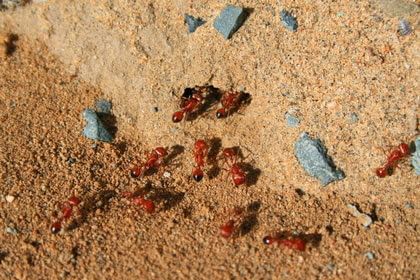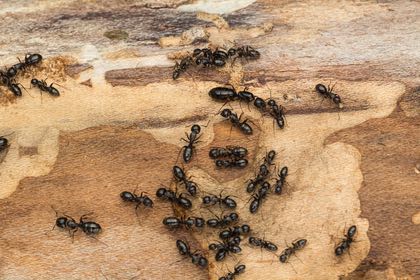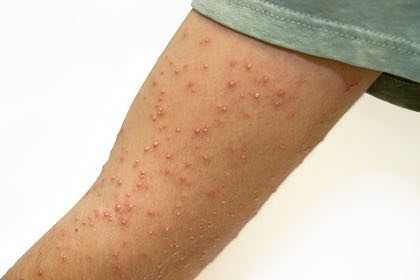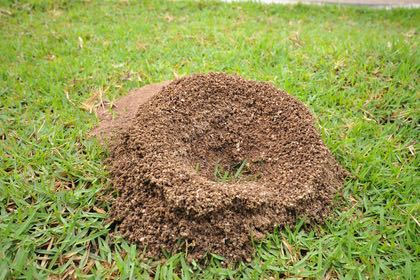Ant Exterminator and Treatment in Lubbock TX

Ant Control in Lubbock and Amarillo TX
Ants are a common insect in Lubbock and Amarillo backyards, but when they start to jeopardize your kid's playtime or regularly enter the home or office, they can become real pests. On top of being creepy crawlies, ants have painful bites, cause structural damage to your home, contaminate food, and so much more. Avoid these pests altogether with the help of a professional ant exterminator like Bug Tech.
Still Have Questions?
Send us a note. Schedule a FREE estimate and get fast, easy booking.
"*" indicates required fields
Get Your Customized Ant Control Plan and
FREE Estimate
Texas Ant Species
There are different types of ants throughout the United States. As professional exterminators local to West Texas, we are specially equipped to defend against common ant species in this region. Some of the top suspects we deal with are:
- Pharaoh ants, known as sugar ants are very small (1/12 – 1/16” long) black ants that are common home intruders in West Texas. Loyal to their name, they are attracted to sweet foods and almost always nest indoors, making them a pest.
- Argentine ants aren’t native to Texas but are commonly seen in Lubbock. The half-inch-long, brown ants can be attracted to sweet and protein-rich foods.
- More dangerous species in Lubbock are red imported fire ants, with reddish-brown bodies that vary greatly in size. The ants are aggressive when nests are disturbed, typically in large mounds outdoors.


Ant Behavior
Ants are social insects, meaning they live in functioning ant cities. These colonies have one or multiple queen ants, and can easily support hundreds of millions of worker ants. Worker ants are most involved with finding sources of food for a colony and are the typical pest. These colonies can be found in self-made ant mounds, dead logs, under debris, or inside the home. Many species are nocturnal, although once inside your home, ants can be active at all times of the day.
Ants mostly affect us in warmer months, during very wet or very dry conditions. In Lubbock, this would typically mean at the start of the summer. Most ants can’t handle the West Texas winter and activity slows or ends during this time.
Ant Risks
Ants aren’t categorized as vectors, although some species have been observed in hospitals to transport disease between patients. Many ants bite when provoked, although most species are too small to cause pain. Still, some people experience allergic reactions to ant bites, which result in extreme discomfort. Some species that commonly bite are:
Carpenter ants and Texas harvester ants are large and can have painful bites.
Fire ants have painful stings that can be worse than a bee's or wasp's. Fire ants have more aggressive behavior and can swarm victims, stinging multiple times from potentially thousands of workers.


Identifying an Ant Problem
Ants are a natural part of the ecosystem and can help eliminate other insects that are more feared and destructive: such as spiders and termites. However, certain species of ants should be controlled including pharaoh and carpenter ants, which can be chronic pests, frequently invading and colonizing the home.
Invasive species aren’t native to Texas and often exhibit more harmful behaviors. One common invasive species, fire ants, can be dangerous to small children, pets, and the elderly and if spotted in your home, should be promptly removed.
Most folks know they have a problem when large colonies appear near or inside the home. There is a potential for millions of worker ants to descend on your kitchen for a meal, and ant swarms are likely. For a few days of the year, ant populations will swarm near the colony to mate and reproduce. Swarms also happen when the nest is threatened and it’s an obvious sign of an infestation.
Preventive Measures
The best treatment for an ant infestation is prevention. Some of the most common DIY methods or tips are:
- Store food in airtight containers to eliminate food sources for ants.
- Regularly inspect and seal entry points around door frames to prevent ants from entering.
- Check and seal wall voids where ant nests can live and multiply.
- Use boric acid as an effective ant control method in areas of infestation.
- While boric acid and other at-home treatments can be effective, for thorough and lasting solutions, the assistance of professional ant extermination services is often necessary.


General Ant Treatment Plans
Once our team has conducted a thorough inspection and determined the type of ant and behavior, we can target bait for protein-loving ants or sugar-loving ants and implement a general pest control service. The ant bait Bug Tech installs is the best on the market. A lot of ant baits tend to dry out over time, but the bait we use draws moisture from the air and is always moist.
This bait trap will be strategically placed 12 inches apart, along ant superhighways. That way, ants eat the bait, take it back to the colony, share it, and then wipe out the colony.
For outdoor ants, Bug Tech deploys two techniques for yard treatment. We treat with a liquid residual and also use granular bait.
For carpenter ants, Bug Tech utilizes a treatment similar to termite control to prevent significant damage to your home. We observe the ants and find the wooden structures near the home or location of the ant colony. For example, certain types of trees in very close proximity to a home can lead to an ant infestation. Trimming back the branches or even removing the trees if necessary can aid in carpenter ant control.
Other sources may be as easy as a woodpile next to the home. Once removed, Bug Tech starts integrated pest management. Our team will trench and drill small holes into the foundation and apply a dusting of chemical residuals. Regular follow-up will ensure carpenters are removed and no future infestations occur.
Trust Bug Tech for ant pest control needs. Call us today at (806)-777-5142
